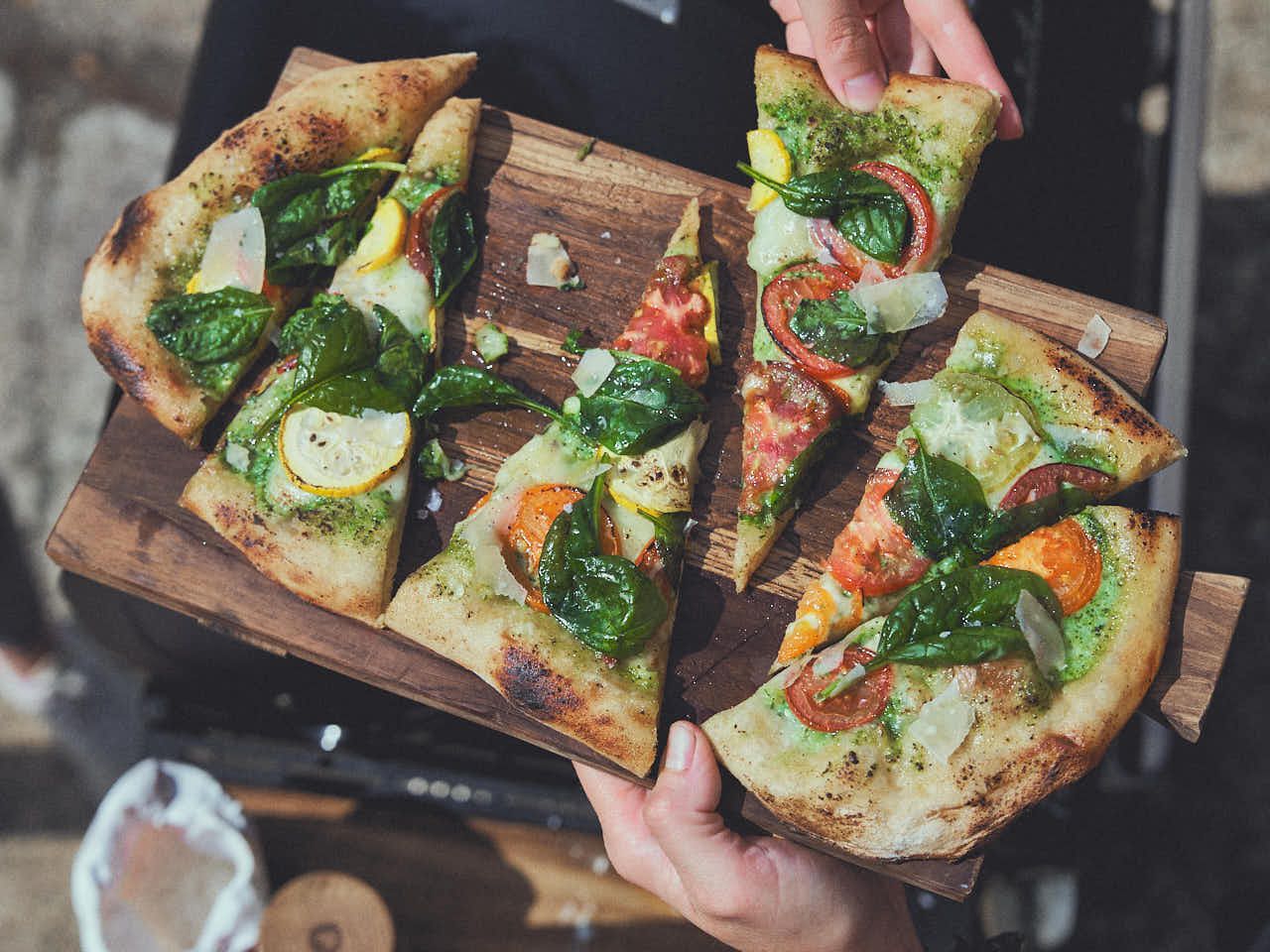
If you've long since given up searching for the one "original" pizza recipe in the vastness of the internet, I've got a hot tip for you: Just enter "Pinsa" instead of "Pizza" in the search field and check out Pinsa Romana, the Italian ancestral pizza! Long before Pizza Margherita and Co. were invented in Naples, these rustic topped dough sheets already knocked the old Romans out of their strappy sandals!
The biggest difference between Pinsa and Pizza? A wild flour mix of wheat, spelt, rice, and chickpeas, which can absorb a lot of water thanks to plenty of protein (chickpea) and starch (rice). Specifically, this means that after baking, you'll have an ultra-light base for your favorite toppings. Speaking of which: Thanks to the thicker dough, you can really load your Pinsa Romana decadently with toppings. Or opt for the purist version. Spicy green pesto instead of sauce, a colorful mix of summer tomatoes and zucchini turn your Pinsa into not only an eye-catcher but also simply fantastic Italian finger food!
MY TIP:
If you don't handle a lot of gluten well, then you should definitely give Pinsa a try as an alternative to pizza. Due to the flour mix and the really high hydration (solid 80% water to 100% flour ratio), the Pinsa dough not only has less gluten - the long fermentation time also ensures that the yeast has plenty of time to break down more complex sugar compounds (known as FODMAPs). These are, in addition to gluten, what may cause problems for your stomach.
Ingredients
For 4 servings
for the Pinsa
for the topping
Equipment
nutritional values per serving
Preparation in 10 steps
Mix the flour types two days before baking the dough. Dissolve the yeast in 350 ml of water and add to the flour. Knead (10 minutes with a mixer at a slow speed, alternatively 15 minutes by hand). Add salt and olive oil. Gradually add the remaining water while stirring. Knead the dough for a total of 20 minutes until it separates easily from the edge of the bowl.
Let the dough covered at room temperature for 1.5 hours, stretching and folding every 30 minutes (a total of 2 times): Grab one side of the dough and pull it upwards, then fold it into the center and press it down. The dough should be stretched as far as possible without tearing. Rotate the bowl by 90 degrees and repeat 7 more times until all sides have been folded twice into the center. Cover the dough again and let it continue to rise.
Let dough rest covered in the refrigerator for 48-72 hours.
Take the dough out of the refrigerator before preparing it. Let it come to room temperature for two hours. Divide it into 2 equal portions and roughly shape them into balls. Let it rise at room temperature for 1 hour.
Wash and dry arugula and basil. Pluck basil leaves from the stems. Peel garlic, wash chili, and roughly chop both. Grate Parmesan cheese roughly or chop finely. Set aside a handful of Parmesan and basil each. Process remaining ingredients into a homogeneous paste using a hand blender or mortar. Season with salt and pepper.
Wash zucchini and tomatoes and cut them into slices 0.5 cm thick. Mix with a pinch of salt and 1 tbsp olive oil and set aside.
Preheat baking sheet in gas grill or oven to 280 °C.
Grease baking sheet with olive oil. Form dough on a lightly floured work surface by pressing and stretching with your hands from the center to the outside, to an oval shape about a finger thick. Place on the baking sheet and spread with pesto.
When baking in a gas grill, place a fireproof elevation (approx. 5 cm) in the indirect zone. Bake for 3-4 minutes, then top with tomato and zucchini slices and bake for another 8-10 minutes until done.
Serve drizzled with basil, shavings of Parmesan, and olive oil.
